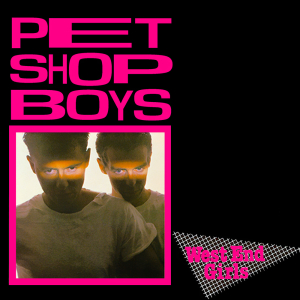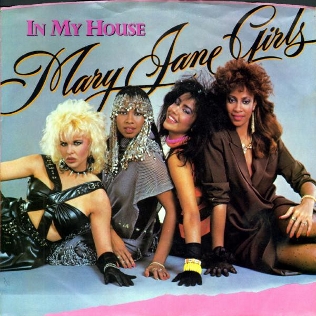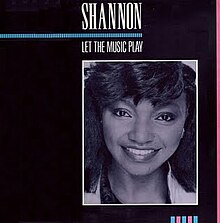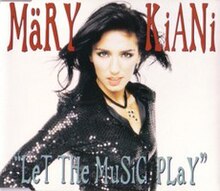Freestyle, or Latin freestyle is a form of electronic dance music that emerged in the New York metropolitan area, Philadelphia, and Miami, primarily among Hispanic Americans and Italian Americans in the 1980s. It experienced its greatest popularity from the late 1980s until the early 1990s. A common theme of freestyle lyricism originated as heartbreak in an urban environment typified by New York City.

"Walk This Way" is a song by the American rock band Aerosmith. Written by Steven Tyler and Joe Perry, the song was originally released as the second single from the album Toys in the Attic (1975). It peaked at number 10 on the Billboard Hot 100 in early 1977, part of a string of successful hit singles for the band in the 1970s. In addition to being one of the songs that helped break Aerosmith into the mainstream in the 1970s, it also helped revitalize their career in the 1980s when it was covered by hip hop group Run-D.M.C. on their 1986 album Raising Hell. This cover was a touchstone for the new musical subgenre of rap rock, or the melding of rock and hip hop. It became an international hit, reaching number 4 on the Billboard charts and becoming the first hip hop single to reach the top five on the charts, and won both groups a Soul Train Music Award for Best Rap Single in 1987 Soul Train Music Awards. Both versions are in the Grammy Hall of Fame.

"When Doves Cry" is a song by American musician Prince, and the lead single from his sixth studio album Purple Rain. According to the DVD commentary of the film Purple Rain (1984), Prince was asked by director Albert Magnoli to write a song to match the theme of a particular segment of the film that involved intermingled parental difficulties and a love affair. The next morning, Prince had composed two songs, one of which was "When Doves Cry". According to Prince's biographer Per Nilsen, the song was inspired by his relationship with Vanity 6 member Susan Moonsie.
Brenda Shannon Greene, known professionally as Shannon, is an American singer and songwriter of freestyle and dance-pop music. She is best known for her single "Let the Music Play", which topped the Billboard Dance Club Songs chart in 1983 and was certified gold.

"You Keep Me Hangin' On" is a song written and composed by Holland–Dozier–Holland. It was first recorded in 1966 by American Motown group the Supremes, reaching number one on the Billboard Hot 100. American rock band Vanilla Fudge released a cover version in June the following year, which reached number six on the Billboard Hot 100. Wilson Pickett recorded it in 1969. English singer Kim Wilde covered "You Keep Me Hangin' On" in 1986, reaching number one on the Billboard Hot 100 in June 1987. In the first 32 years of the Billboard Hot 100 rock era, "You Keep Me Hangin' On" became one of the six songs to reach number one by two different musical acts. In 1996, American country singer Reba McEntire's version reached number two on the US Billboard Hot Dance Club Play chart. The BBC ranked the Supremes' original song at number 78 on The Top 100 Digital Motown Chart, which ranks Motown releases by their all-time UK downloads and streams.

"Let's Stay Together" is a song by American singer Al Green from his 1972 album of the same name. It was produced and recorded by Willie Mitchell, and mixed by Mitchell and Terry Manning. Released as a single in 1971, "Let's Stay Together" reached number 1 on the Billboard Hot 100, and remained on the chart for 16 weeks and also topped Billboard's R&B chart for nine weeks. Billboard ranked it as the number 11 song of 1972.

"Ball of Confusion (That's What the World Is Today)" is a 1970 hit single by the Temptations. It was released on the Gordy (Motown) label, and written by Norman Whitfield and Barrett Strong.

"I Will Survive" is a song by American singer Gloria Gaynor, released in October 1978 as the second single from her sixth album, Love Tracks (1978). It was written by Freddie Perren and Dino Fekaris. The song's lyrics describe the narrator's discovery of personal strength following an initially devastating breakup. The song is also frequently recalled as a symbol of female empowerment, as well as a disco staple.

"Let's Get It On" is a song by soul musician Marvin Gaye, released June 15, 1973, on Motown-subsidiary label Tamla Records. The song was recorded at Hitsville West in Los Angeles, California. The song features romantic and sexual lyricism and funk instrumentation by The Funk Brothers. The title track of Gaye's album of the same name, it was written by Marvin Gaye and producer Ed Townsend. "Let's Get It On" became Gaye's most successful single for Motown and one of his most well-known songs. With the help of the song's sexually explicit content, "Let's Get It On" helped give Gaye a reputation as a sex symbol during its initial popularity. "Let's Get It On" is written and composed in the key of E-flat major and is set in time signature of common time with a tempo of 82 beats per minute.

"West End Girls" is a song by English synth-pop duo Pet Shop Boys. Written by Neil Tennant and Chris Lowe, the song was released twice as a single. The song's lyrics are concerned with class and the pressures of inner-city life in London which were inspired partly by T. S. Eliot's poem The Waste Land. It was generally well received by contemporary music critics and has been frequently cited as a highlight in the duo's career.

"Time After Time" is a 1983 song by American singer-songwriter Cyndi Lauper, co-written with Rob Hyman, who also provided backing vocals. It was the second single released from her debut studio album, She's So Unusual (1983). The track was produced by Rick Chertoff and released as a single in March 1984. The song became Lauper's first number 1 hit in the U.S. The song was written in the album's final stages, after "Girls Just Wanna Have Fun", "She Bop" and "All Through the Night" had been written or recorded. The writing began with the title, which Lauper had seen in TV Guide magazine, referring to the science fiction film Time After Time (1979).

"Family Affair" is a 1971 number-one hit single recorded by Sly and the Family Stone for the Epic Records label. Their first new material since the double A-sided single "Thank You "/ "Everybody Is a Star" nearly two years prior, "Family Affair" became the third and final number-one pop single for the band. In 2021, Rolling Stone magazine ranked the song 57th on their list of the 500 Greatest Songs of All Time. The cover version by John Legend, Joss Stone, and Van Hunt, won the Grammy Award for Best R&B Performance by a Duo or Group with Vocals at 49th Annual Grammy Awards.

"Runaway" is a number-one Billboard Hot 100 song made famous by Del Shannon in 1961. It was written by Shannon and keyboardist Max Crook, and became a major international hit. It topped the Billboard charts for four consecutive weeks, and Billboard ranked it as the No. 5 song for 1961. It was No. 472 on the 2010 version of Rolling Stone's list of the 500 Greatest Songs of All Time and No. 466 on the 2004 version.

"Let's Hear It for the Boy" is a song by Deniece Williams that appeared on the soundtrack to the feature film Footloose. The song was released as a single from both the soundtrack and her album of the song's same name on February 14, 1984, by Columbia Records. It was written by Tom Snow and Dean Pitchford and produced by George Duke. The song became Williams' second number one on the US Billboard Hot 100 on May 26, 1984, also topping the dance and R&B charts, and peaked at number two on the UK Singles Chart, behind "Wake Me Up Before You Go-Go" by Wham!. It was nominated for an Academy Award for Best Original Song, and was certified platinum in the US and gold in Canada and the UK by the Recording Industry Association of America, Music Canada and the British Phonographic Industry, respectively. The music video was released in mid-April 1984. The song features background vocals from George Merrill and Shannon Rubicam, who would go on to form the duo Boy Meets Girl.

"We Are Family" is a song recorded by American vocal group Sister Sledge. Composed by Bernard Edwards and Nile Rodgers, they both offered the song to Atlantic Records; although the record label initially declined, the track was released in April 1979 as a single from the album of the same name (1979) and began to gain club and radio play, eventually becoming the group's signature song.
"Don't Leave Me This Way" is a song written by Kenneth Gamble, Leon Huff and Cary Gilbert. It was originally released in 1975 by Harold Melvin & the Blue Notes featuring Teddy Pendergrass, an act signed to Gamble & Huff's Philadelphia International label. "Don't Leave Me This Way" was subsequently covered by American singer Thelma Houston in 1976 and British duo the Communards in 1986, with both versions achieving commercial success.

"The Power" is a song by German Eurodance group Snap!, released as their debut single. It was released on 3 January 1990 as the lead single from their debut studio album, World Power (1990). The song reached number one in Greece, the Netherlands, Spain, Switzerland, the UK and Zimbabwe, as well as on the US Billboard Hot Dance Club Play and Hot Rap charts. On the Billboard Hot 100, "The Power" managed to reach number two for one week.

"Point of No Return" is a single by the American pop group Exposé. Written and produced by Lewis Martineé, the single was originally released in 1984 on the Pantera label with Alejandra Lorenzo (Alé) as the lead singer. The single was re-recorded in 1987 with Jeanette Jurado as the lead vocalist and included on the group's debut album, Exposure (1987), when it was finally released on compact disc in 1989.

"100% Pure Love" is a song recorded by American singer and songwriter Crystal Waters from her second studio album, Storyteller (1994). It was released on April 11, 1994 by Mercury and A&M (UK), as the album's lead single. The song was a hit in many countries, reaching the top 20 in Australia, Finland, the Netherlands, Switzerland, the United Kingdom, and the United States. It is certified platinum in Australia and gold in the US. In 1995, it was awarded the prize for Top ASCAP Dance Song. And its accompanying music video, directed by Marcus Nispel, was nominated for Best Dance Video at the 1994 MTV Video Music Awards.

"In My House" is a song produced, written and arranged by American musician Rick James and recorded by his protégées, the Mary Jane Girls, for their second studio album, Only Four You (1985). It was released as the album's lead single in October 1984 by Gordy Records. In the United States, the single topped Billboard's Dance Club Songs chart in April 1985 and remained atop the chart for two weeks. It also reached the top 10 on both the Billboard Hot 100 and Billboard Hot R&B/Hip-Hop Songs chart, peaking at number seven on the Hot 100 in June 1985 and remained in the top 40 for 12 weeks. It is the group's highest-peaking single and their only top-40 entry on the Billboard Hot 100, although they have had other singles succeed on both the R&B and dance charts.


















